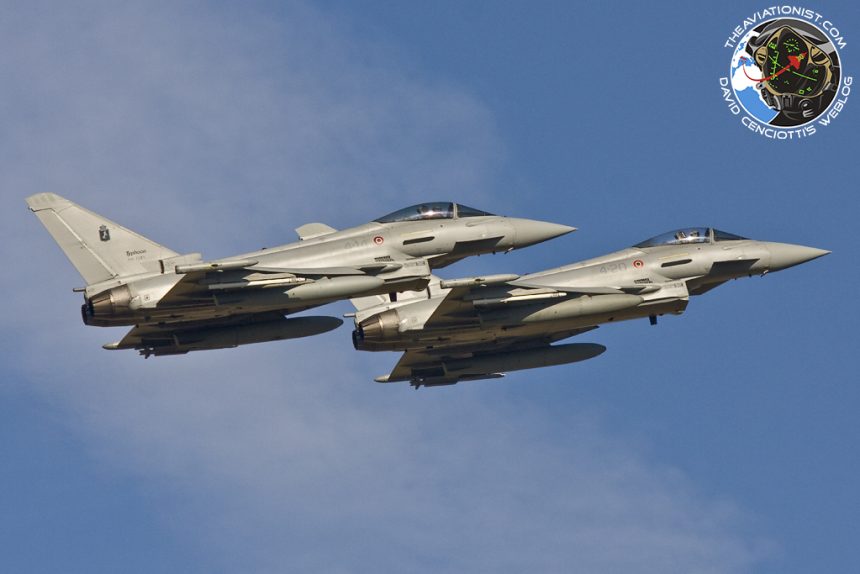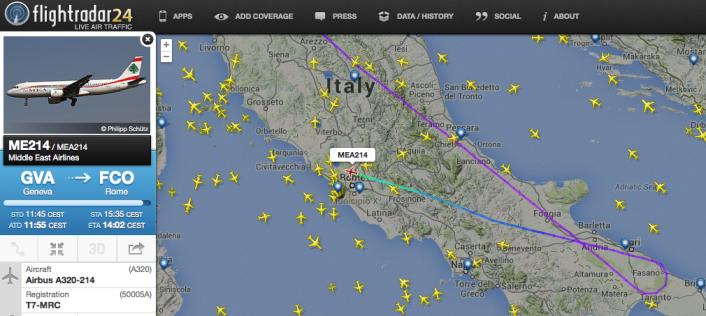Two Italian Eurofighter Typhoon in QRA (Quick Reaction Alert) were scrambled to intercept and escort MEA214 flight that reported a bomb threat aboard.
Two loud sonic booms were heard at around 1.45PM LT in Central Italy as two Italian Air Force Typhoons accelerated to supersonic speed to intercept Middle East Airlines 214 flight, an Airbus 320 from Geneva to Beirut.
The two fighter planes, belonging to the 4° Stormo (Wing) from Grosseto, in QRA (Quick Reaction Alert) service round the clock together with those of the 36° Stormo from Gioia del Colle, were dispatched to intercept the Lebanese plane that, once flying over Bari, in southeastern Italy, radioed the Italian Air Traffic Control the request to land at Rome Fiumicino airport, because of a bomb threat.
The two armed Typhoons intercepted the Airbus 320 T7-MRC and escorted it to landing on runway 16R at Fiumicino airport, then circled at low altitude over the sea near the airport, until security forces surrounded the plane and brought it to an isolated parking slot.
The subsequent inspection did not find any bomb aboard the plane.
The MEA214 route could be tracked on Flightradar24.com as the following screenshot shows.
Image credit: screenshot by FR24.com

















